Penglipuran Village… This small village in central Bali is renowned for maintaining its culture and traditions, plus being very well-kept. And a casual visit certainly does impress – but there is much more to the story than the superficial one of being the world’s third cleanest village.
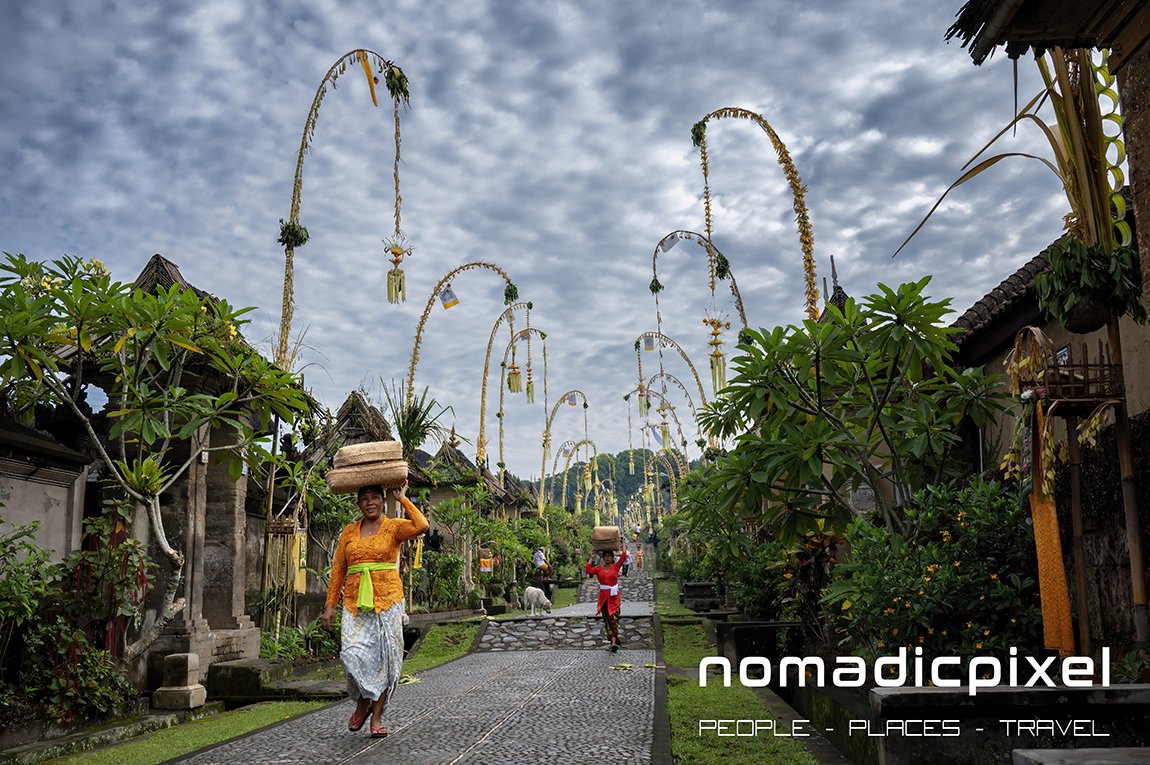
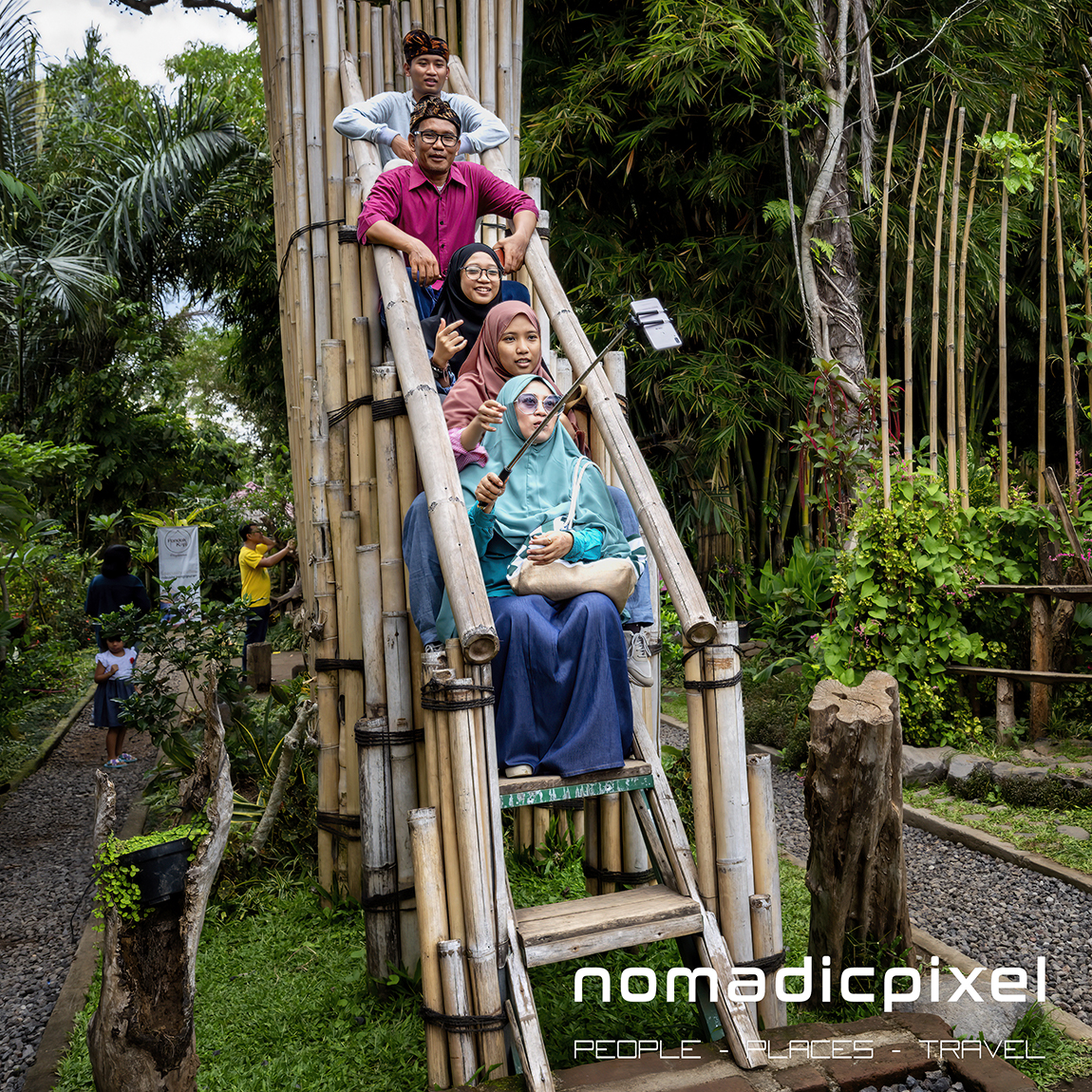
Penglipuran Village at Galungan
The thing is that Penglipuran gets really busy. As numerous tour operators and drivers tout it as the “real Bali”.
Personally I find it hard to appreciate locations when they are full of passing tourists looking for Instagrammable moments. Then a Balinese friend suggested that if I really wanted to get get a better understanding of the village and its culture, then I should stay at Penglipuran around Gulangan.
Galungan is the single most important event in the Balinese calendar. At its most basic, it’s a celebration to honour the triumph of good over evil. And is tremendously important to the Balinese and their Hindu-based culture.
In total, with the 3 days of preparation before the actual day of Galungan, the celebrations and ceremonies last 14 days. With the special day of Kuningan coming 10 days after Galungan. So the whole period is often compared to Christmas and New Year.
Galungan is the day where the Balinese celebrate their deceased family members by welcoming their spirits back from Heaven – albeit for a brief visit. While Kuningan is the day when those spirits are farewelled and return to heaven.
Penglipuran Village – Remember the Origin…
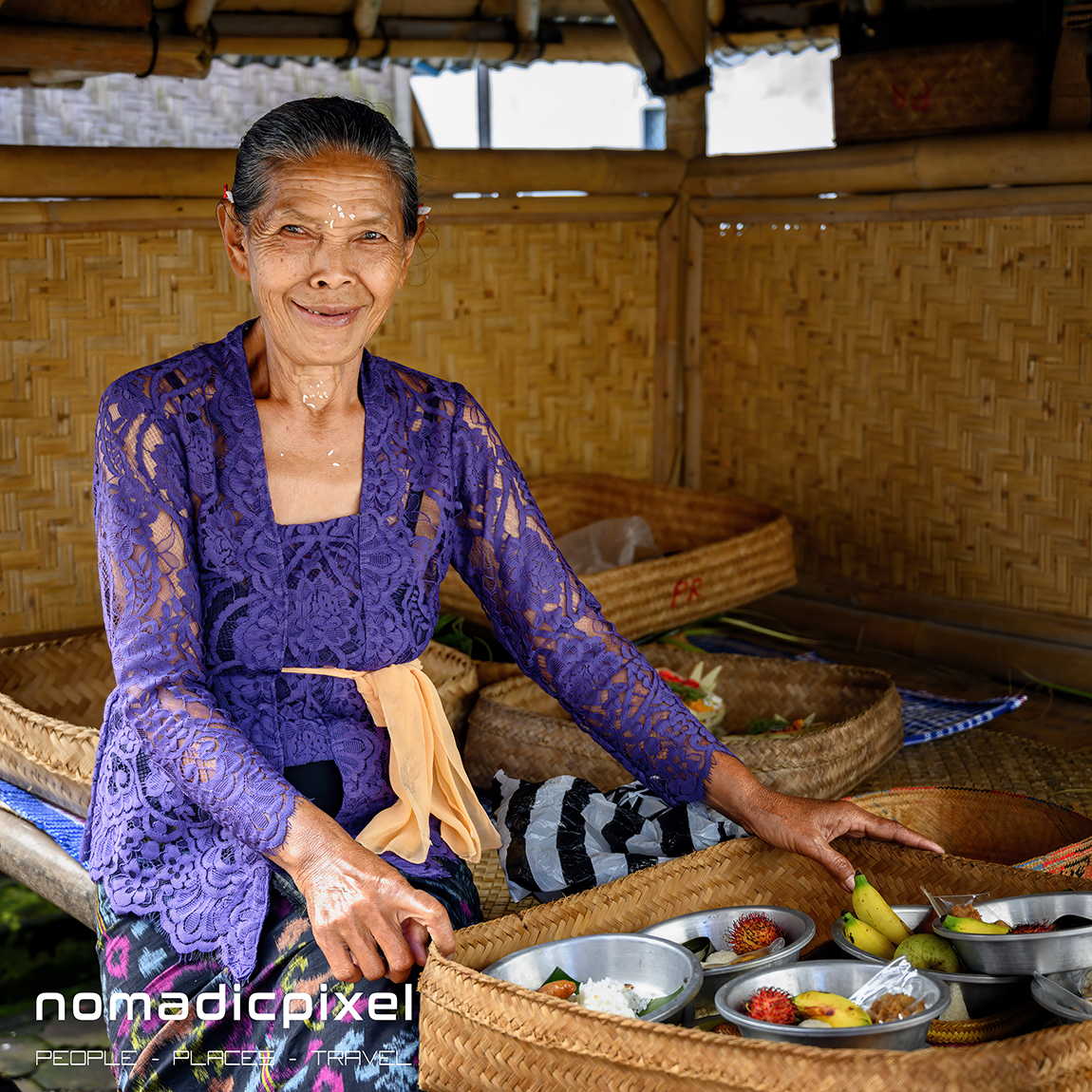
Penglipuran takes its name from the Balinese words Pengeling (remember) and Pura (temple or ancestral land). Which roughly translates as “remember the origin” and refers to the core Balinese Hindu philosophy of Tri Hita Karana.
The three principles of Tri Hita Karana are all based on harmony – with the many Hindu Gods, between the people themselves and (most importantly) with nature and the environment.
The island’s numerous ceremonial rituals and offerings are how the Balinese strive to achieve harmony with their Gods. While gotong-royong (mutual cooperation) is their way of maintaining inter-personal harmony.
That harmony with nature and the environment is widely considered as the key to the island’s fundamental prosperity. And, while the rich volcanic soil, plentyful sunshine and abundant water supplies are the basic enablers. The way the Balinese manage it all is what makes it sustainable.
Sustainability is often described as “meeting the needs of the present, without compromising the ability of future generations”.
And Penglipuran village, together with its nearby bamboo forest, are great examples of the successful application of that ethos.
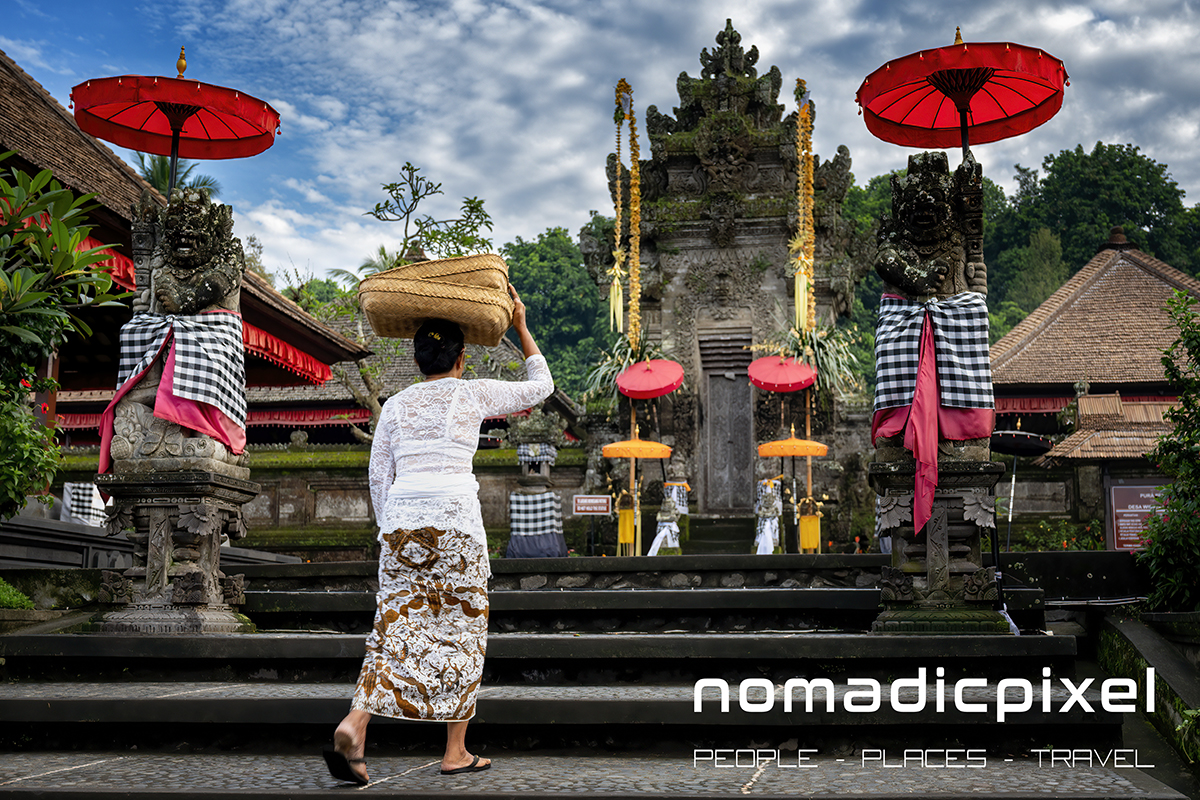
The Village Prepares for Galungan
To ensure the spirits don’t lose their way returning to the village and are properly welcomed back. The villagers go to great lengths to prepare Penglipuran and ensure it is looking its very best.
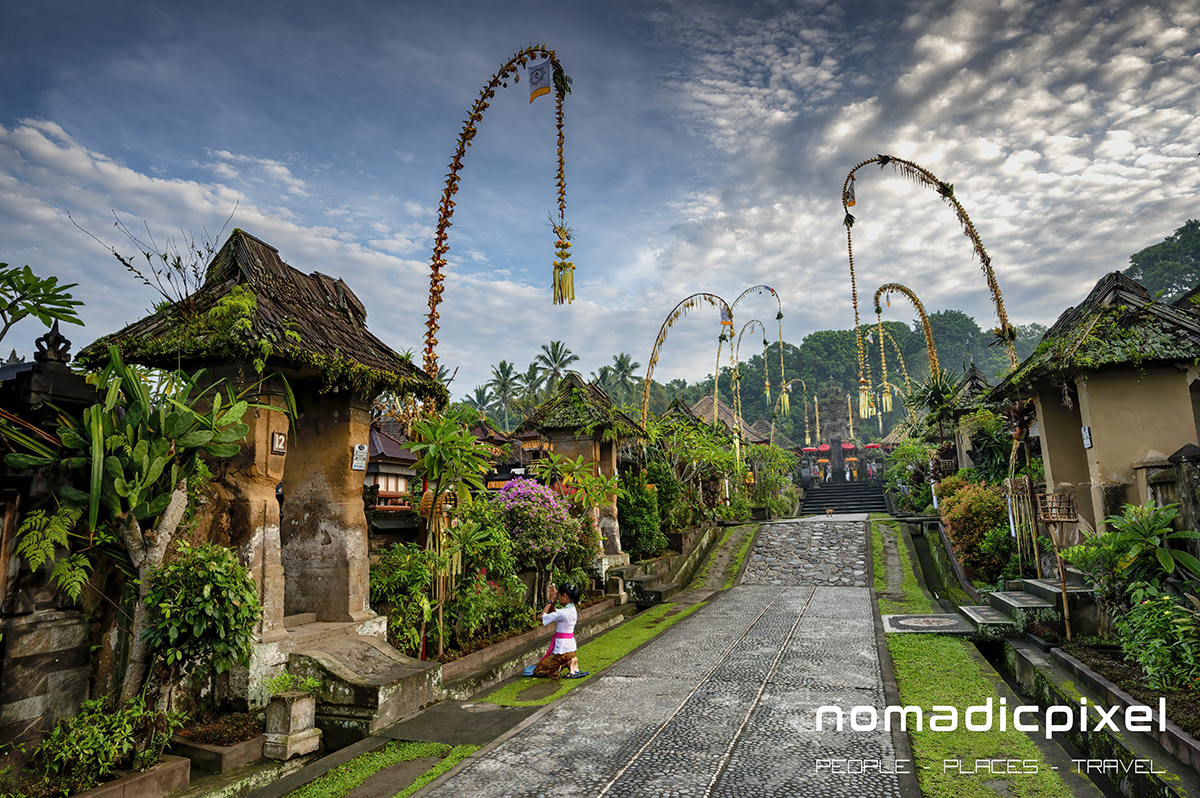
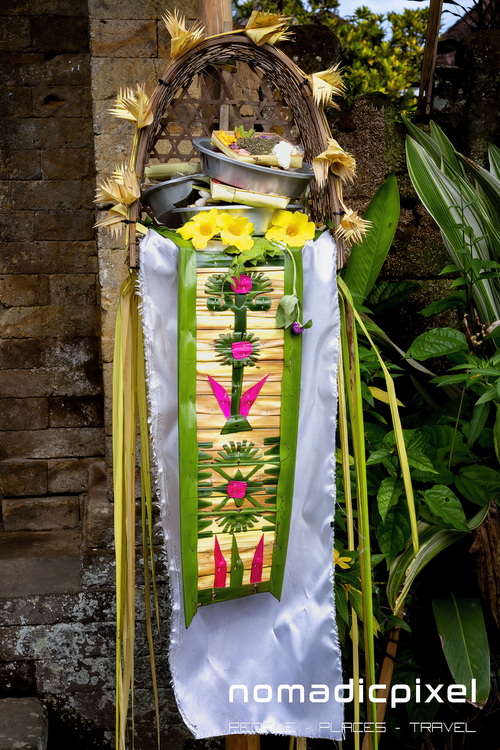
The most visible signs of those preparations are the penjor – bamboo poles, with suspended offerings, that are erected at the side of roads and main paths through the village.
Penjors are basically symbols of gratitude to the earth and the gods for the prosperity of Bali. And the ones used at Galungan are the special “ritual” type. Which have a religious significance to the Balinese and are only used at Galungan.
While the more common decorative type can be seen throughout the year and are basically used to make an occasion a bit special…
The penjors on display at Penglipuran village during Galungan are made by the young males in the village and take about three days to complete.
The height of the penjor is said to represent Mount Agung – the largest and holiest volcano located in the northeast of Bali. While the bamboo pole itself symbolizes Brahma, the Hindu god of creation. And at the base of each ritual penjor is a small bamboo shrine where more offerings are placed.
Those offerings, or Canang Sari, are a gift to the gods in appreciation for them maintaining balance and peace on the island. And also a way honoring and pacifying the demons in hell. Which is all part of how the Balinese maintain a balance between good and bad.
The Three Days Before Galungan
![]() The rest of the preparations are concentrated into the three days before the actual day of Galungan. Those days are called Penyekeban, Penyajaan and Penampahan and all three days have literal and symbolic meanings…
The rest of the preparations are concentrated into the three days before the actual day of Galungan. Those days are called Penyekeban, Penyajaan and Penampahan and all three days have literal and symbolic meanings…
Penyekeban is on the third day before Galungan and the name derives from the Balinese word nyekeb, meaning to ripen. Literally it refers to the final ripening of all the fruits that will be used for offerings on Galungan Day. Which is done by placing them in large clay pots.
But symbolically, it is a reference to Bhuana Alit – the inner small world (heart and soul) of the human being. Just as the fruit needs to ripen and be at its best on Galungan Day, humans also need to mature to resist selfish desires and self-centred behaviour.
To the Balinese the ripening of the fruit is symbolic of that maturity and a sign of the triumph of good over evil.
Penyajaan is the next day – two days before Galungan. The name is derived from the word jaya, meaning glorious or victorious. And literally, Penyajaan Galungan means ‘to be victorious in the war’.
But is more commonly associated with the making of jaja. The special rice cakes made from fried rice dough that are eaten and used for offerings Galungan. Symbolically the jaya rice cakes at Penyajaan are another indicator of the triumph of good over evil.
The third and final day is Penampahan – which is derived from the Balinese word tampah – to kill or slaughter. Literally it is the day that the males of the village kill the pigs and chickens that will provide the meat for the traditional dishes served on Galungan Day.
Symbolically though, the dead animals are sacrificial offerings to rid both the Bhuana Agung (the broader human environment) and the Bhuana Alit (inner small world) of negativity. Or, put another way, killing those pigs and chickens is a metaphor for killing ‘the animal inside yourself’ – a reference to inner animalistic lust… Basically another indicator of good triumphing over evil – which is what Galungan is all about.
Penglipuran Village – Galungan Day
Galungan Day is very much the high point of the overall celebrations. And, from a purely personal perspective, watching it all unfold at Penglipuran was a wonderful experience! My friend had told me to make sure that I was up very early and I walked out of the guest house just after sunrise. Within minutes the first villagers were also out, dressed in their finest traditional costumes and making their first offerings to the spirits.
As the sun rose further in the sky the more the village came to life, with families walking to the various temples to present their offerings. I was able to take many photographs without any hassle, but was always very respectful of what the villagers were doing.
I guess what struck me most was just how tightly integrated and committed the whole community was. Gulungan and everything associated with it was front and center for the whole village. Ccompare that to Christmas for the majority of westerners, where it’s just one big “spendathon”…
Gulungan in Penglipuran had real meaning, was important to all concerned and completely embraced. Which is an incredibly precious thing in these increasingly shallow times!
A very interesting insight into the Balinese culture. Great photos, reminding me of my visit to Bali 38 years ago when there were barely any tourists. My lasting memory being how friendly and happy the Balinese people were.
Thanks for reviewing our village